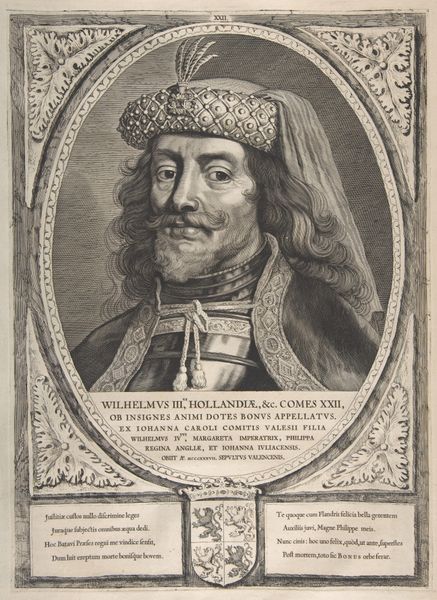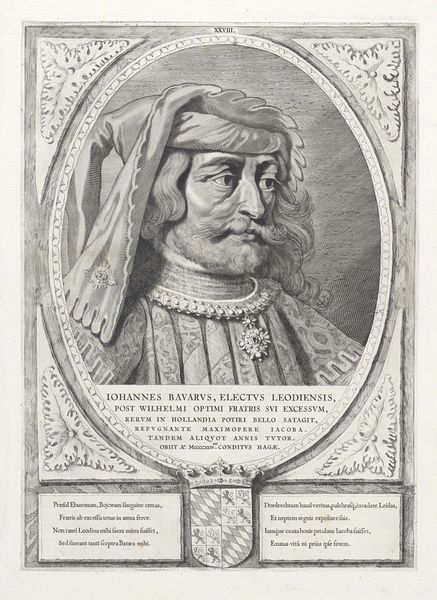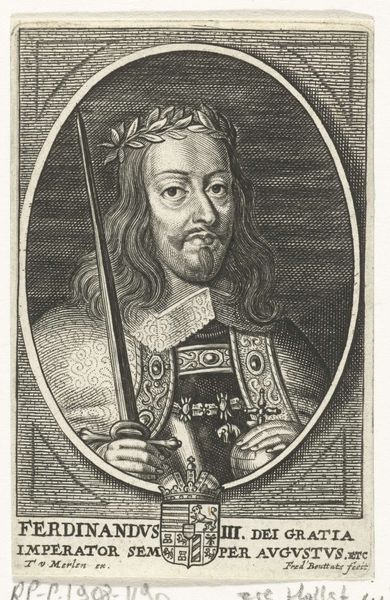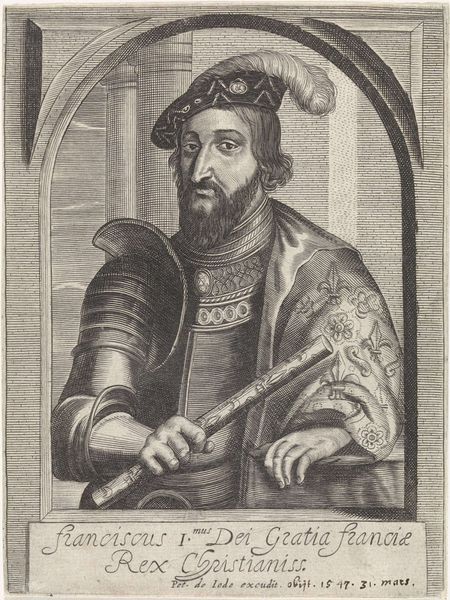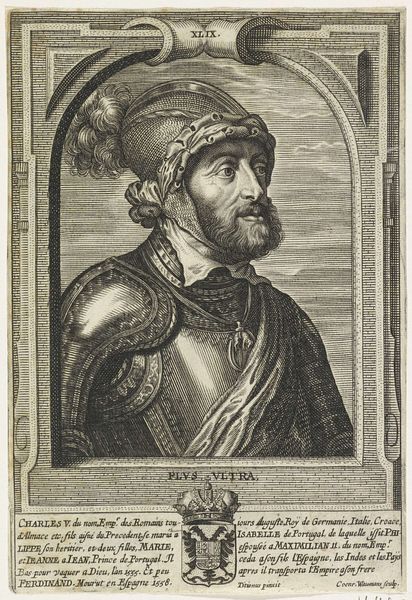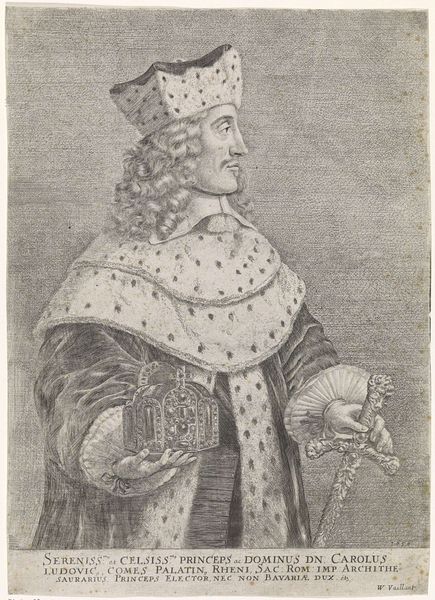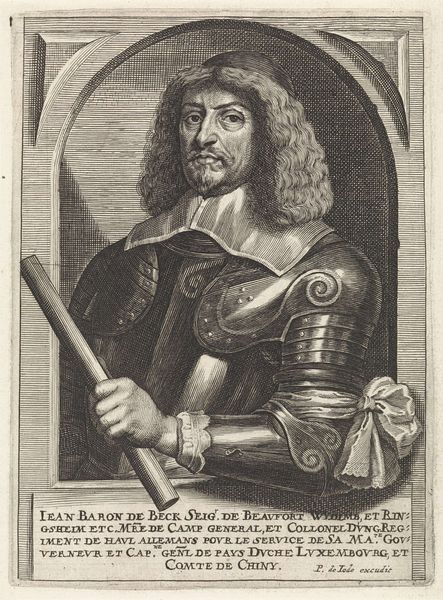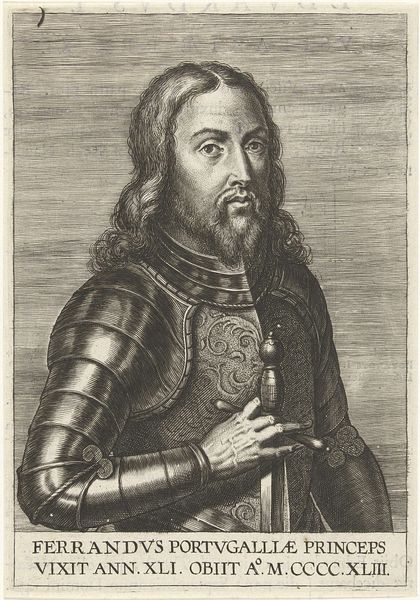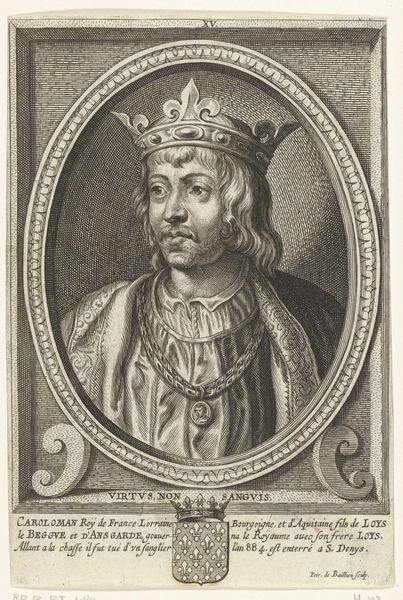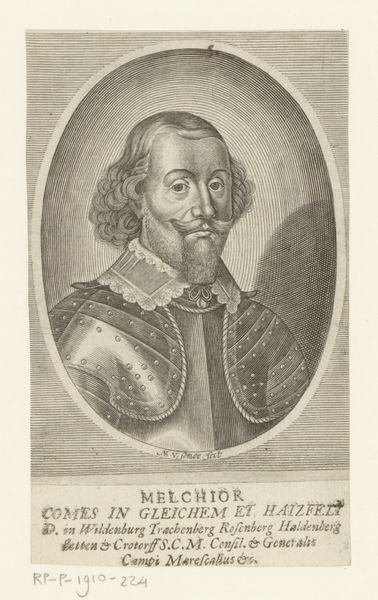
print, engraving
#
portrait
#
medieval
# print
#
engraving
Dimensions: height 170 mm, width 126 mm
Copyright: Rijks Museum: Open Domain
Curator: Right now, we’re looking at "Portret van Lodewijk van Male, graaf van Vlaanderen," a striking engraving by Pieter de (II) Jode. It's held here at the Rijksmuseum, and historians believe it was made sometime between 1628 and 1670. Editor: It’s incredible! Even though it's a print, it exudes such a stoic, medieval mood. He seems…burdened, almost melancholic, despite all the regal finery. Curator: Indeed. Jode masterfully employs engraving to bring forth textures; look at the chainmail detail. It's a remarkable feat for printmaking. But it's more than just technical skill, isn't it? This image speaks to a specific moment in power, of legitimization through imagery. Editor: Absolutely. That coat of arms emblazoned with a… pelican feeding her young? It smacks of medieval symbolism: sacrifice, duty, lineage. It's fascinating how that imagery persists, even as the methods of production modernize. Who controls the image, controls the narrative, right? And the use of Latin inscriptions around the portrait reinforces that authority. Curator: Precisely. The print acts as a historical artifact, both in subject and technique. It represents not just Louis of Male, but also the era of printmaking's growing importance in shaping historical memory. Editor: It’s a really good illustration—pardon the pun!—of how these printed portraits served as tools for forging identity, establishing prestige, particularly at a time when political boundaries and power were constantly shifting. Even the fact that it *is* a print speaks volumes. It allows for broader dissemination. It isn’t unique but multiplied and disseminated widely. Curator: Yes! Consider its affordability, for example. Although images of rulers circulated through many channels, prints would’ve given more middling audiences direct, affordable access to depictions of nobility, and thus some engagement with constructing its ideals, while serving to connect the Flemish with their own histories. It is like a medieval version of mass media, of social media… kind of! Editor: Exactly. A potent reminder that these images always participate in power structures. Makes me want to research how such imagery intersected with broader cultural and political movements of the time! Curator: Agreed. There's always another layer to peel back with works like this. They give such potent information when we unpack what's there in front of us and place that within the broader tapestry of history.
Comments
No comments
Be the first to comment and join the conversation on the ultimate creative platform.

